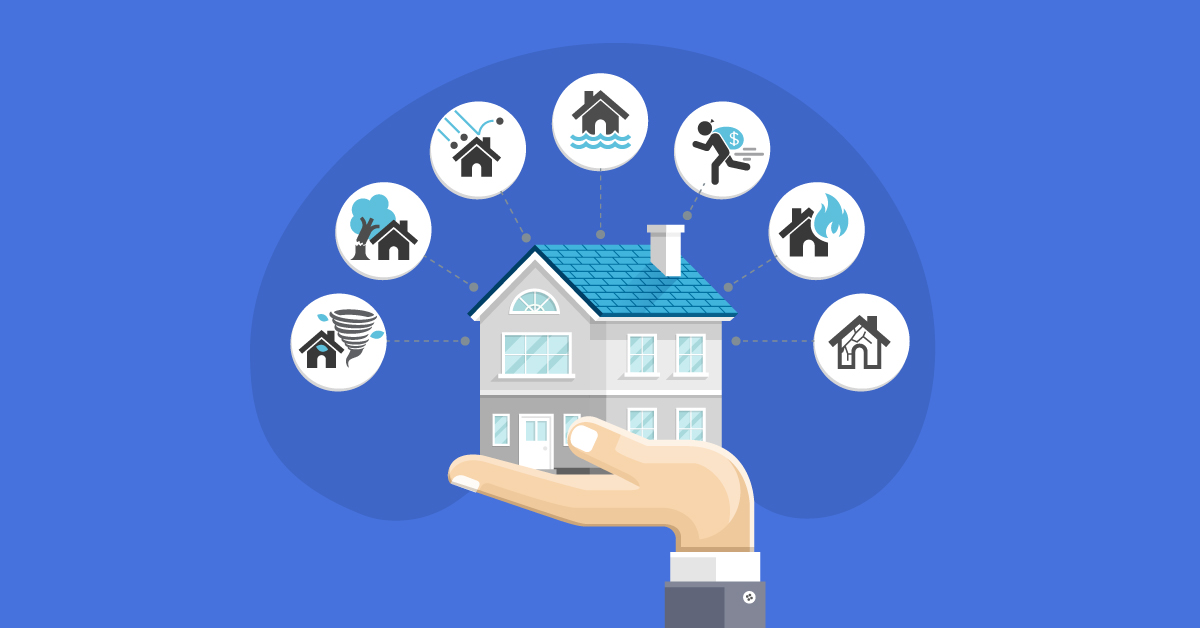Home insurance is one of the most important investments you can make. After all, your home is likely your biggest asset. Signing up with a company that can’t pay claims or offers inadequate coverage could leave you in a difficult financial situation.
What’s more, home insurance shopping is only sometimes straightforward. Many different types of policies and coverages are available, making it hard to compare apples to apples.
That’s why carrying due diligence and shopping around for the best home insurance policy is so important. In this post, we’ll guide you through the process so you can make an informed decision about your coverage.
What Is Home Insurance?
Home insurance, also known as homeowner’s insurance, falls into the category of property insurance. Essentially it covers your home and your personal belongings in the event of damage or loss. It can help protect you from financial losses caused by fires, theft, weather damage, and more.
Most home insurance policies have two main types of coverage: dwelling coverage and personal property coverage.
Dwelling coverage helps protect your home’s structure, including the roof, walls, and foundation. It can also help cover expenses related to temporary repairs or rebuilding after a covered event.
Personal property coverage helps protect your belongings, such as furniture, clothing, and electronics. This coverage may also extend to jewelry, art, or collectibles.
In addition to dwelling and personal property coverage, home insurance policies may also include liability coverage. This can help protect you from financial damages if you’re sued for someone’s injury or property damage that occurred on your property.
Home insurance policies typically have a deductible, which is the amount you’ll need to pay out of pocket before your coverage kicks in. Depending on your policy, deductibles can range from $500 to $5,000.
It’s important to note that home insurance only covers certain types of events. For example, most standard policies exclude damage caused by earthquakes or floods. If you live in an at-risk area for these disasters, you may need to purchase separate insurance policies.
Levels of Home Insurance Policies

While all home insurance policies help protect your home and belongings, different levels of coverage are available. The type of policy you choose depends on several factors, including the value of your home and belongings, the amount of risk you’re comfortable with, and your budget.
Most insurers offer three levels: Replacement cash value coverage (RCV), Extended replacement cost coverage (ERC), and Guaranteed or actual cash value coverage (ACV).
Replacement Cost Value Coverage
This policy covers the cost to repair or rebuild your home up to the limit stated in your policy. It does not take into account depreciation, so you’re able to reconstruct your home even if it costs more than the original value.
Extended Replacement Cost Coverage
This policy covers the cost to repair or rebuild your home up to a limit stated in your policy, plus an additional percentage (usually 20%). This extra coverage can help you pay for the cost of rebuilding if construction costs have increased since you purchased your policy.
Actual Cash Value Coverage
This policy covers the cost to repair or rebuild your home up to the limit stated in your policy minus depreciation. This means that if your home is damaged or destroyed, you’ll only receive enough money to cover the current value of your home, not the original purchase price.
How Much Home Insurance Coverage Do I Need?
The amount of home insurance coverage you need will depend on the value of your home and belongings and your risk tolerance.
To get the value of your dwelling, multiply your total home’s square footage by the average cost per square foot to rebuild in your area. You can find this information on your city or county’s website.
To calculate the value of your belongings, add up the replacement cost of all your possessions. You can use online tools, like the Home Inventory Checklist, from different insurers to help you estimate the value of your belongings.
Once you have a general idea of the value of your home and belongings, you can start shopping for home insurance policies. Remember that most home insurance policies limit their coverage, so you may need to purchase multiple policies to protect your home entirely.
Additionally, reviewing your policy regularly and updating your coverage as needed is essential. This will help ensure that you’re always adequately protected in case of a covered loss.
Factors That Affect Your Home Insurance Rates
- The value of your home: The more your home is worth, the more it will cost to insure.
- The age and condition of your home: Older homes are usually cheaper to insure because they’re less valuable than newer homes.
- The location of your home: Homes in areas prone to natural disasters or in high-crime locations will cost more to insure.
- The amount of coverage you need: The more coverage you need, the higher your premiums are.
- Your deductible: The higher your deductible, the lower your premiums.
- When shopping for home insurance, compare policies from multiple insurers to find the best coverage at the most affordable price.
Tips for Shopping for Home Insurance
- Shop around: Don’t just go with the first insurer you come across. Make sure to compare rates from multiple insurers to find the best deal.
- Read the fine print: It’s essential to understand precisely what your policy covers. Pay attention to the details so you know what to expect if you ever have to file a claim.
- Consider your needs: Make sure you’re buying a policy that meets your needs. Don’t skimp on coverage to save a few dollars.
- Ask questions: If you’re unsure about something, don’t hesitate to ask your insurer for clarification. It’s better to be safe than sorry.
- Review your policy regularly: It’s essential to review it periodically and update your coverage as needed. This will help ensure you’re well protected in case of a covered loss.
Wrapping Up
Shopping for home insurance is often daunting, but ensuring you have the proper coverage you need to protect your home and belongings is vital.
While the amount of coverage you need will depend on the value of your home, belongings, and your personal risk tolerance, most home insurance policies limit the amount of coverage they provide. Finally, review your policy regularly and update your coverage to ensure you’re always adequately protected.
You might also be interested in: 9 Valuable Tips for Switching Home Insurance Policies





